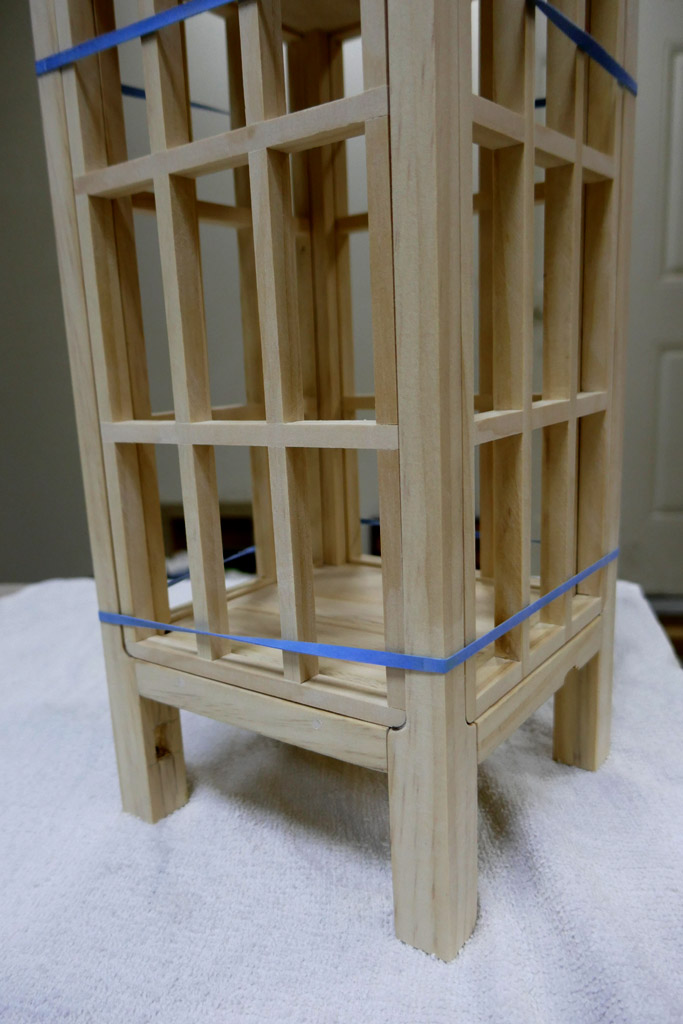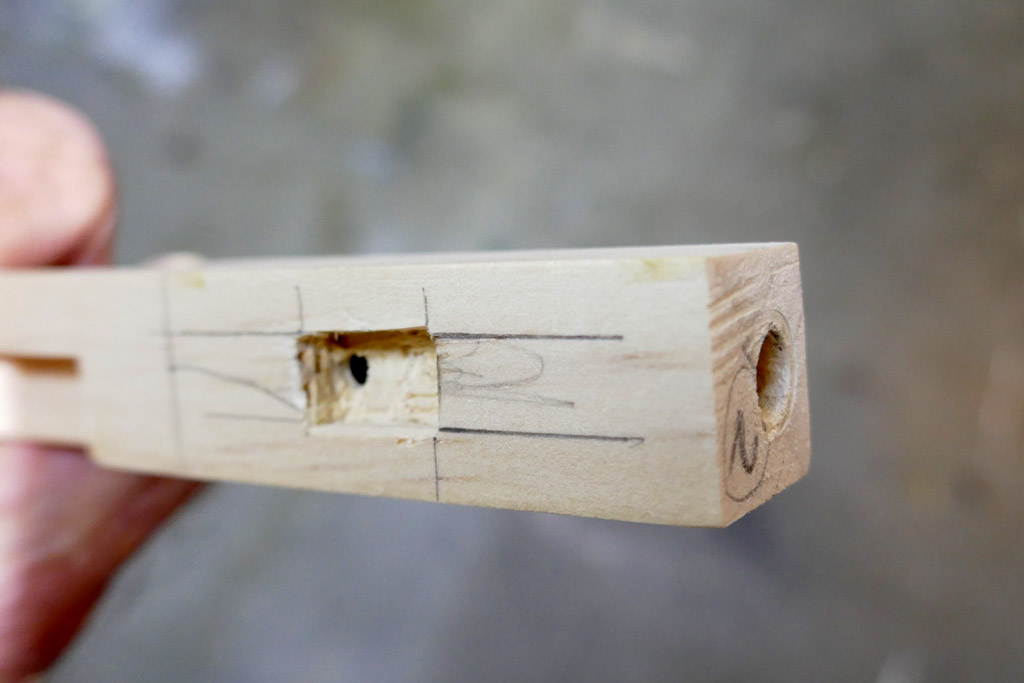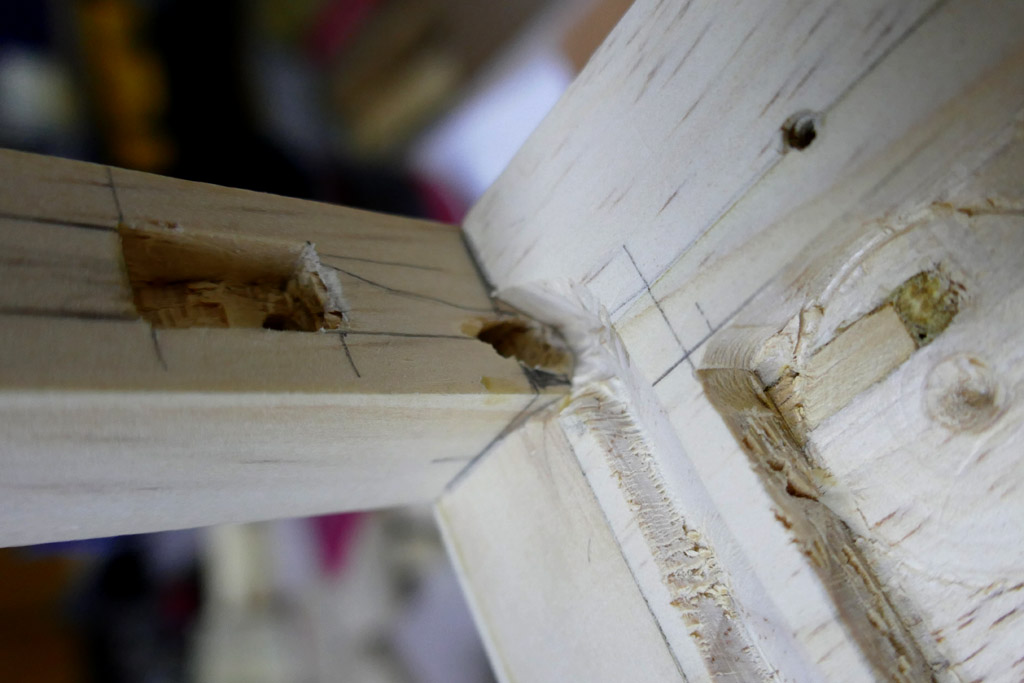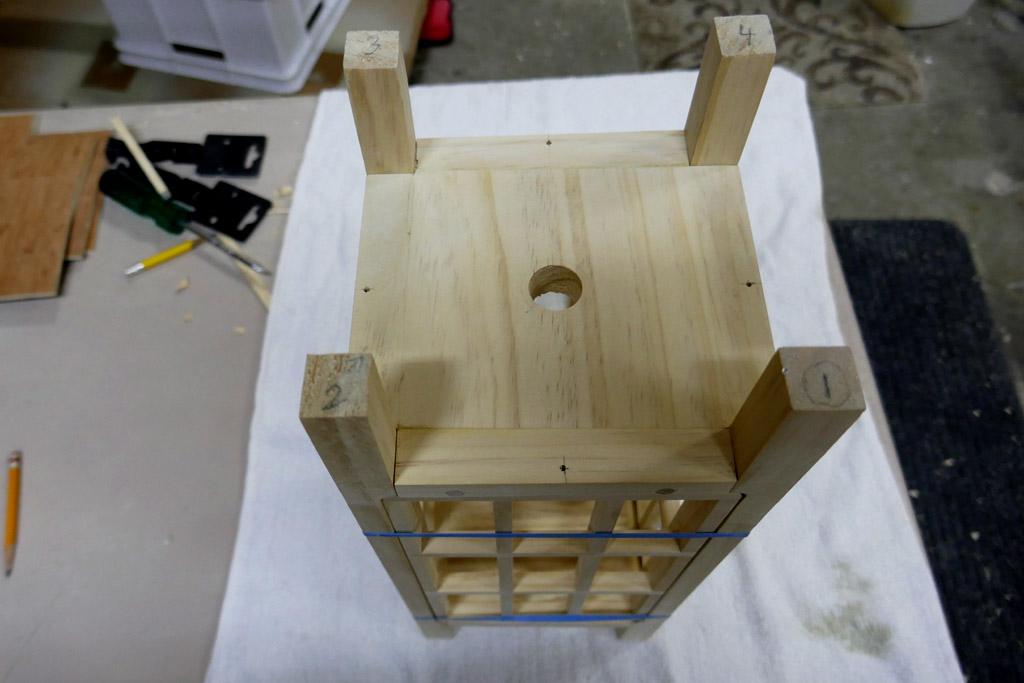Time to replace the rubber bands with dowels and glue…
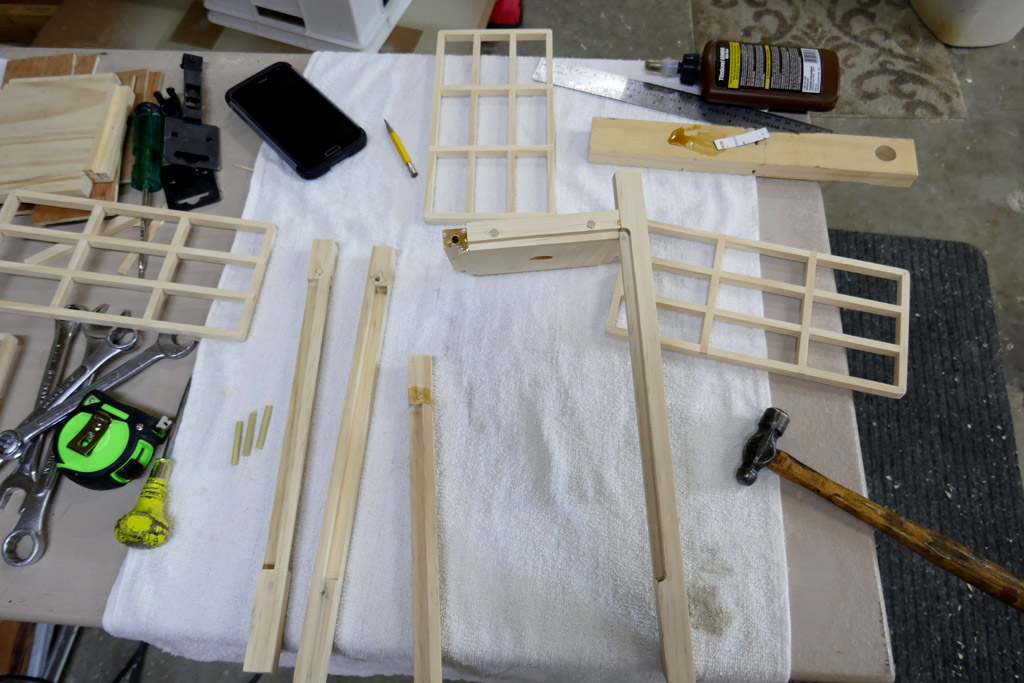
The brown stuff is liquid “hide” glue. It has a long open or work time compared to more common yellow wood glues. That makes it easier to assemble the multiple pieces. The drawback is mainly that it is not waterproof, so no IP rating on this light, and that it is not quite as strong.

Multiple clamps with a rubber band temporary assist.

Some parts came in today’s post. The square piece of sheet copper I had lying about. I drilled a center 3/8” hole and 4 smaller ones for screws to secure this plate to the underside of the wood upper plate, inside the lantern.
The 2 copper discs were purchased from Bopper metal online; 18 gauge, 3 inch diameter. I drilled the 3/8” center holes.
The brass cylinder is a 1/8” IPS (internal pipe size) all threaded nipple. FYI, it has an OD of 3/8”. It and the three pieces above all came from grandbrass.com. They sell a wide assortment of parts used for electric household lamps. All sorts of bits and pieces for DIY building or repairing of lamps. The copper hoop is drilled and tapped to accept the1/8” IPS nipple. The two small cylindical copper items are 3/4” diamter x 3/4” long. One is drilled completely through and tapped 1/8” IPS while the other is drilled partways and tapped leaving a solid cap-like end.
The mcpcb is from mtnelectronics and has a Nichia 219C 3000K emitter.
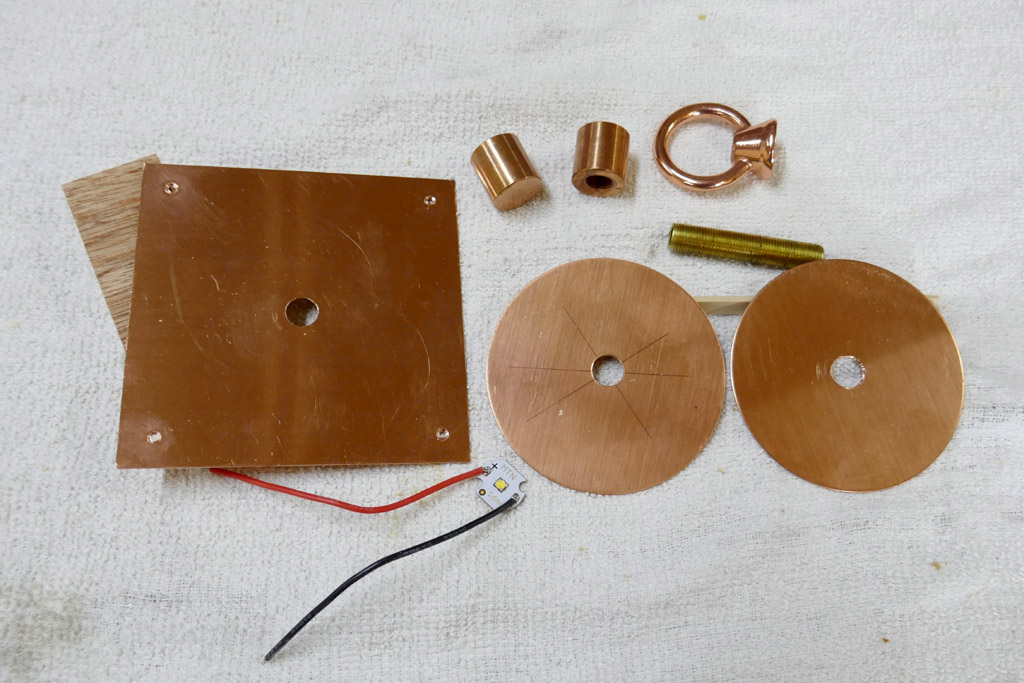
A close up of the nipple, spacer and cap……
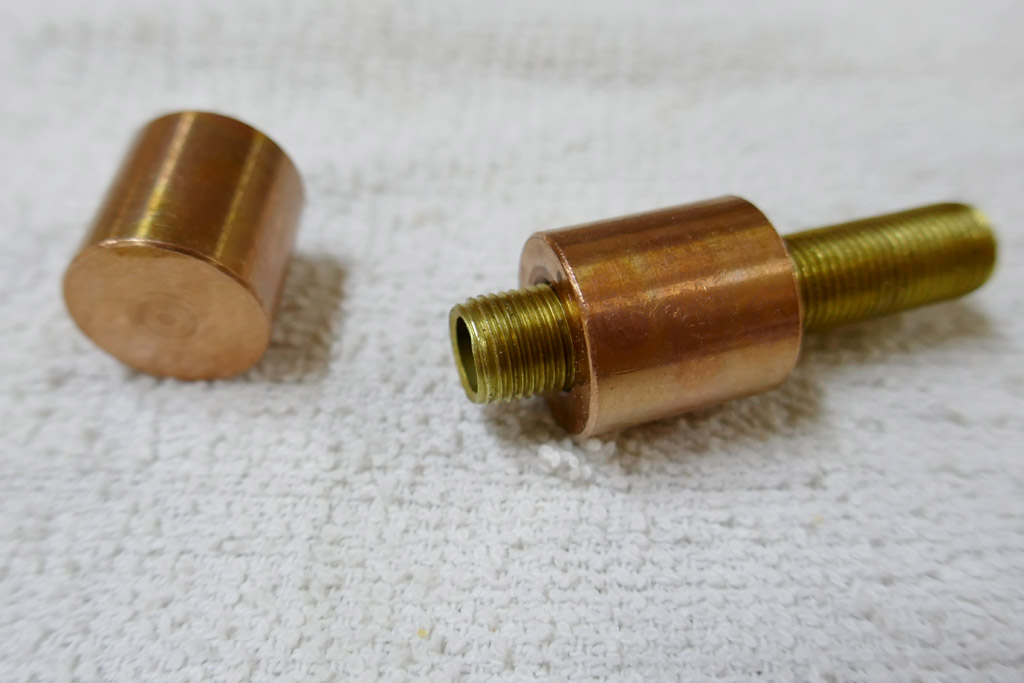
The mcpcb is glued to the copper cap using arctic alumina thermal adhesive.

Voila! The rubber band is to keep the shoji screen frames from falling out. There will be pins installed later to hold them. Illustrated is the copper heat sinking for the led.
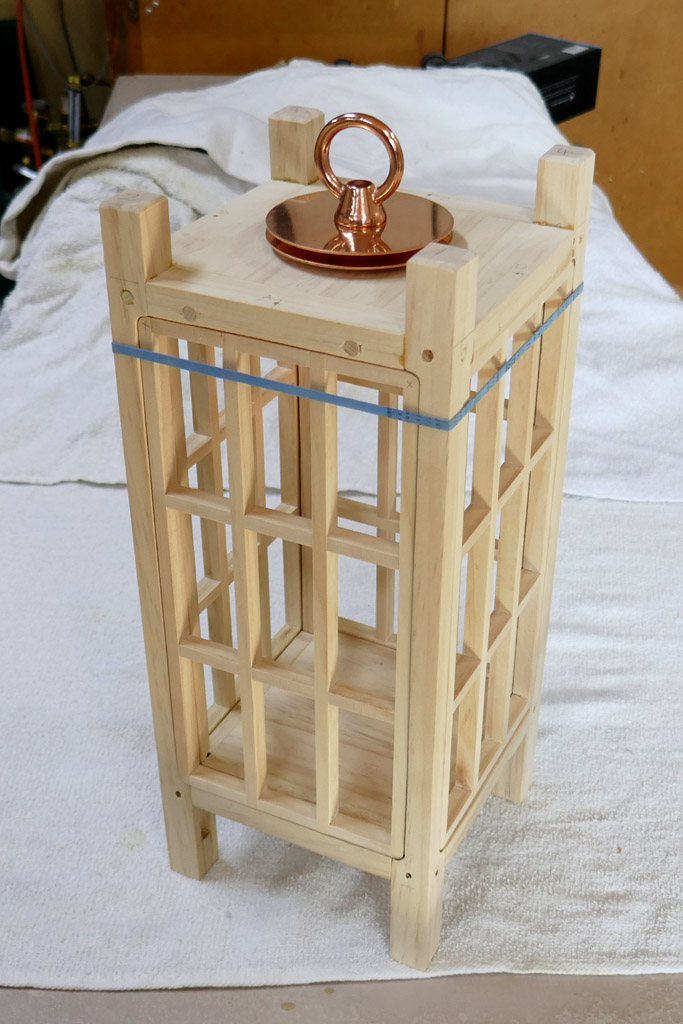
The discs are spaced with 1/8” thick copper washers I found at my local True Value Hardware store. You may note that I have trimmed the length of the upper ends of the 4 corner stiles.
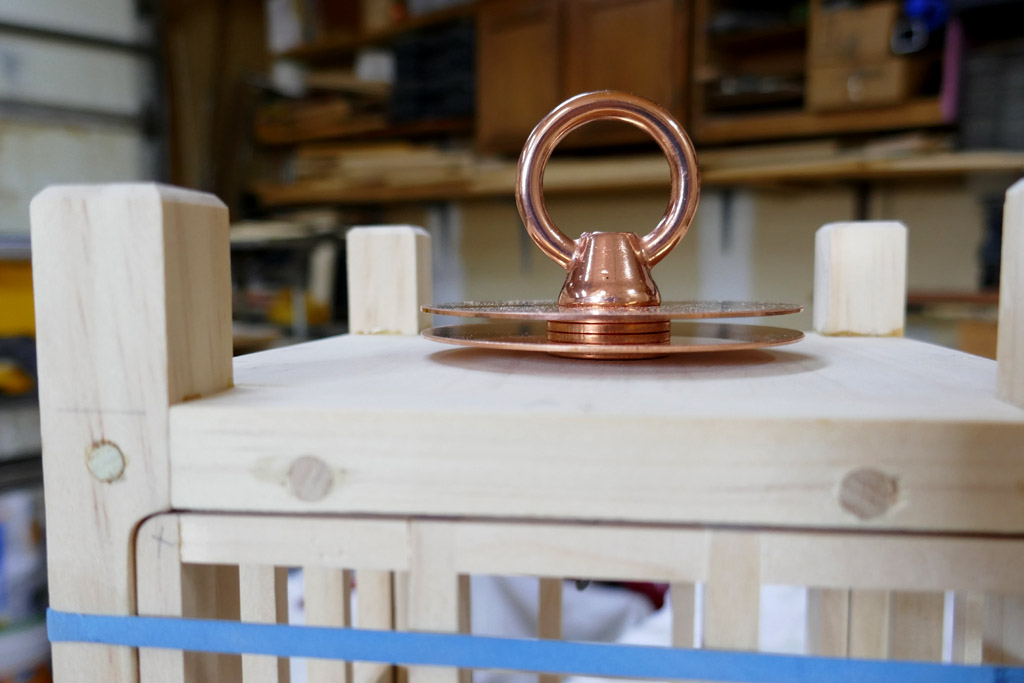
Next we can see the 4 x 4 ” copper plate on the underside of the upper plate. The cap is threaded onto the nipple. Then the 3/4” thick copper spacer is threaded on above the 4 x 4 plate. That spacer is hidden in the hole drilled through the center of the upper wood plate. Then on the outside the round discs are slid on with the 1/8” washer spacers, with the hoop screwed on top. The lantern can be held by the hoop as well as hung.
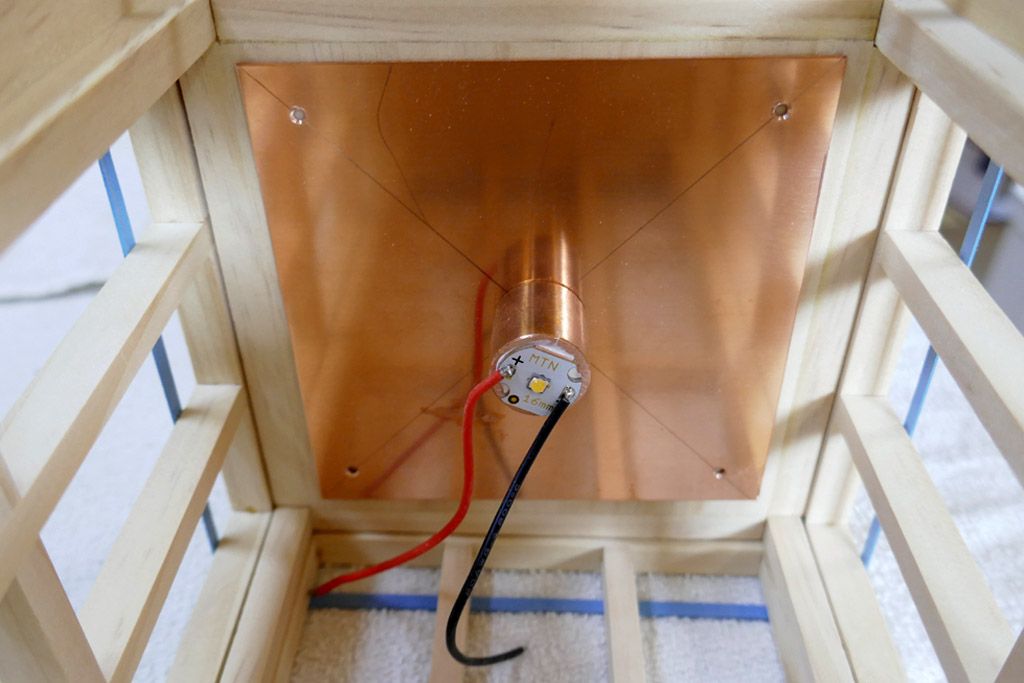
So from the mcpcb to the copper hoop there is, in effect, a solid copper path for heat distribution and dissapation., clamped together by the brass nipple threaded inside the copper parts.


